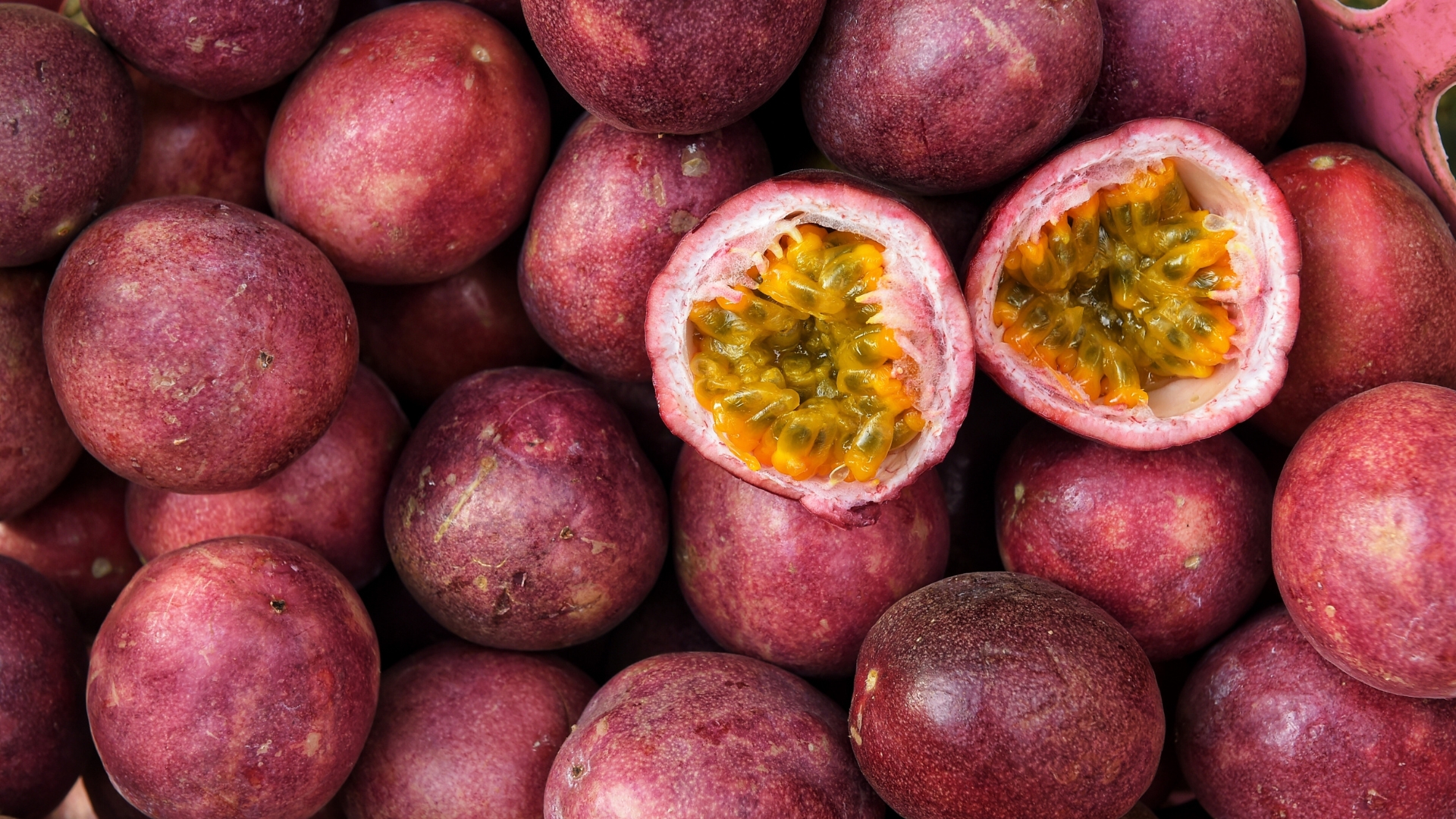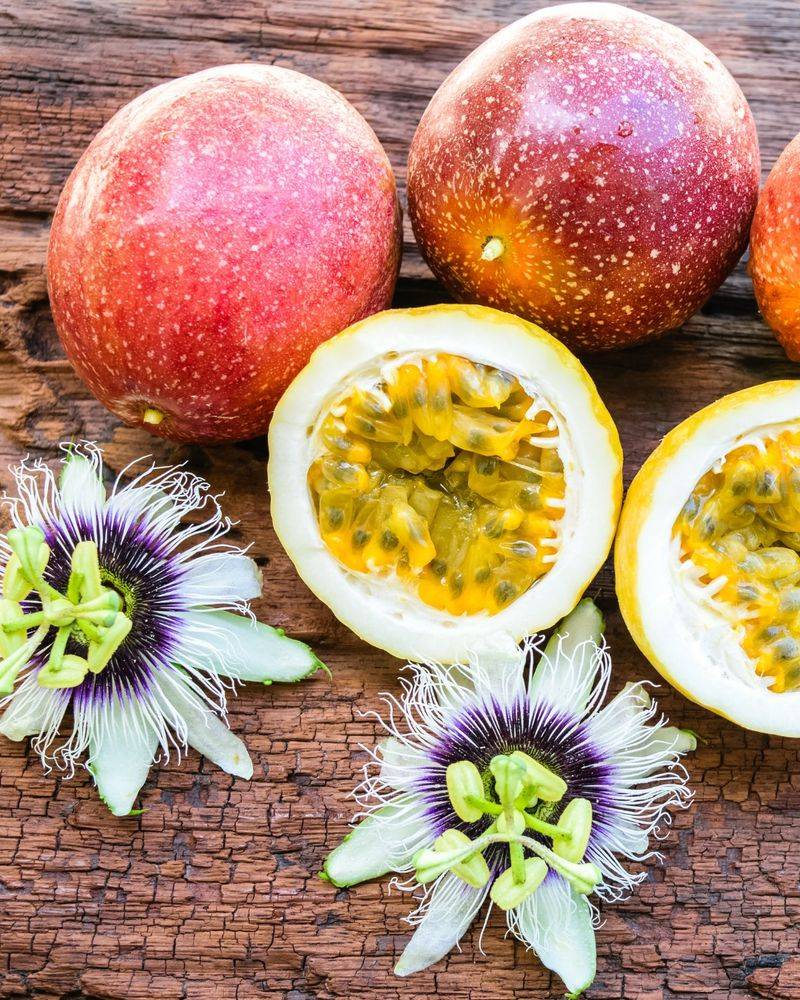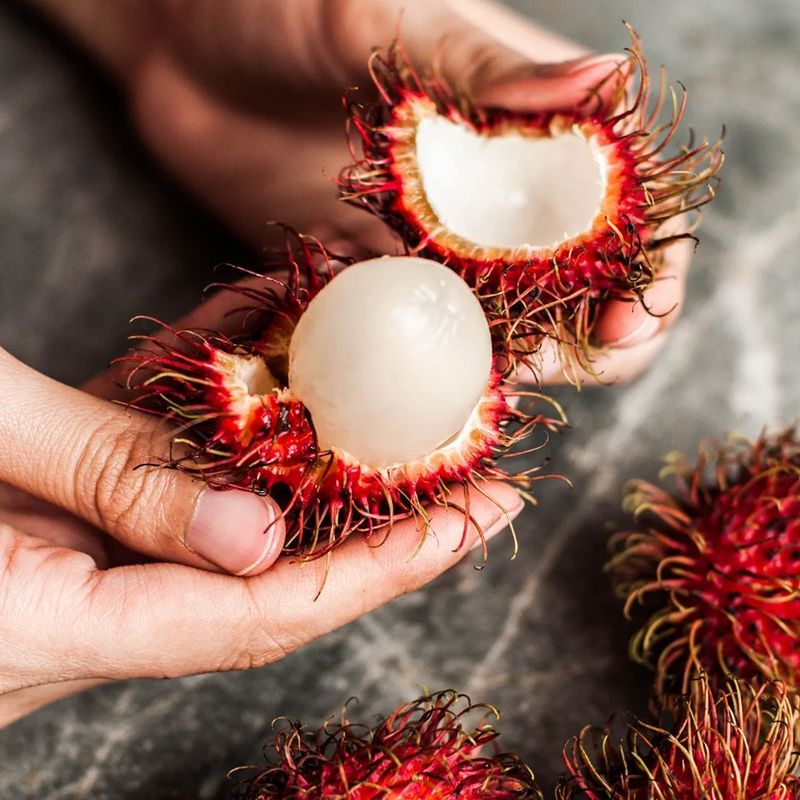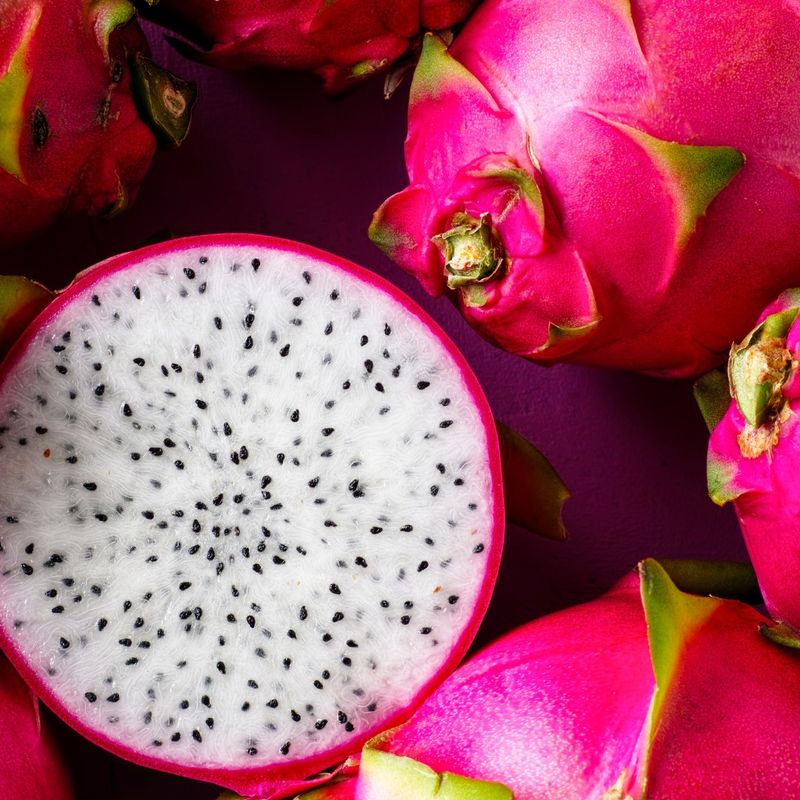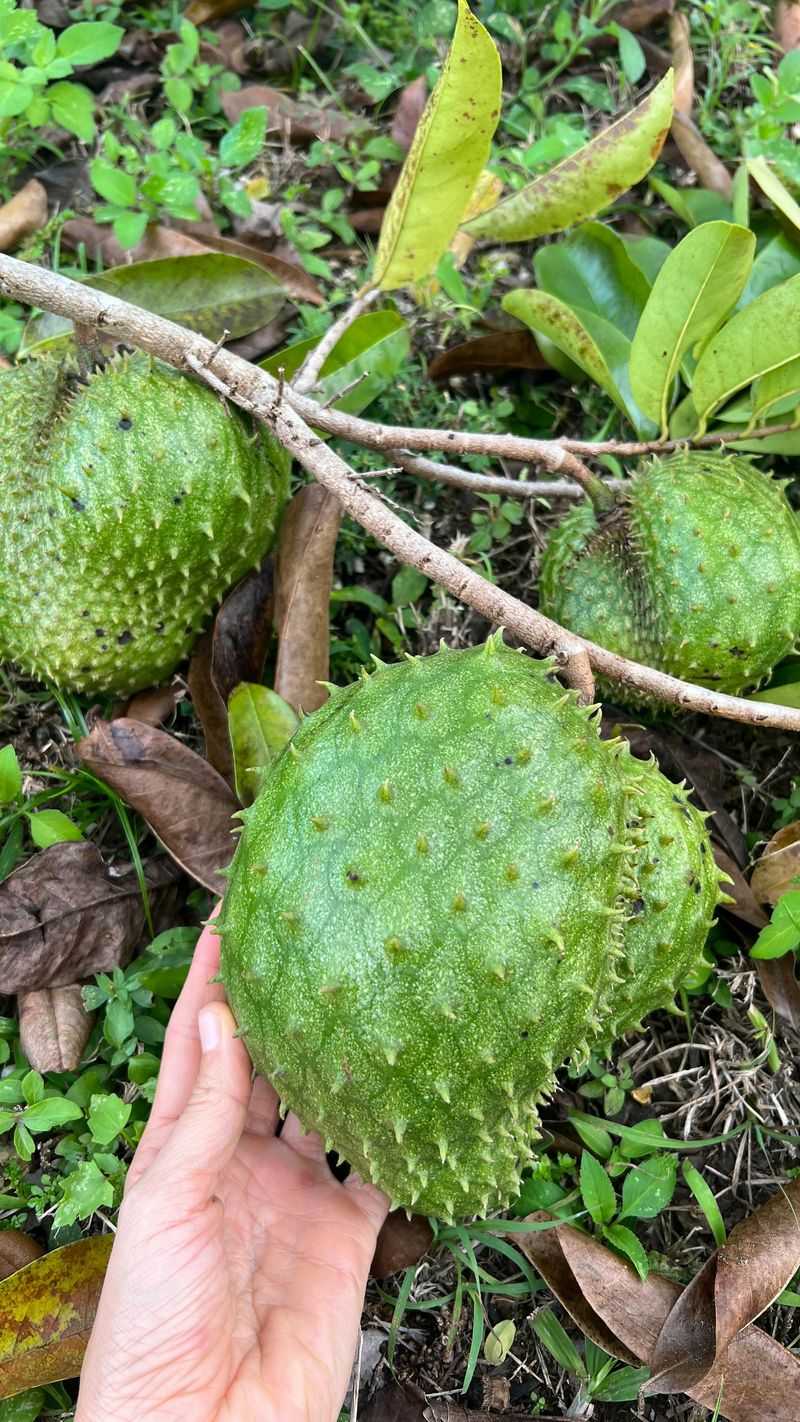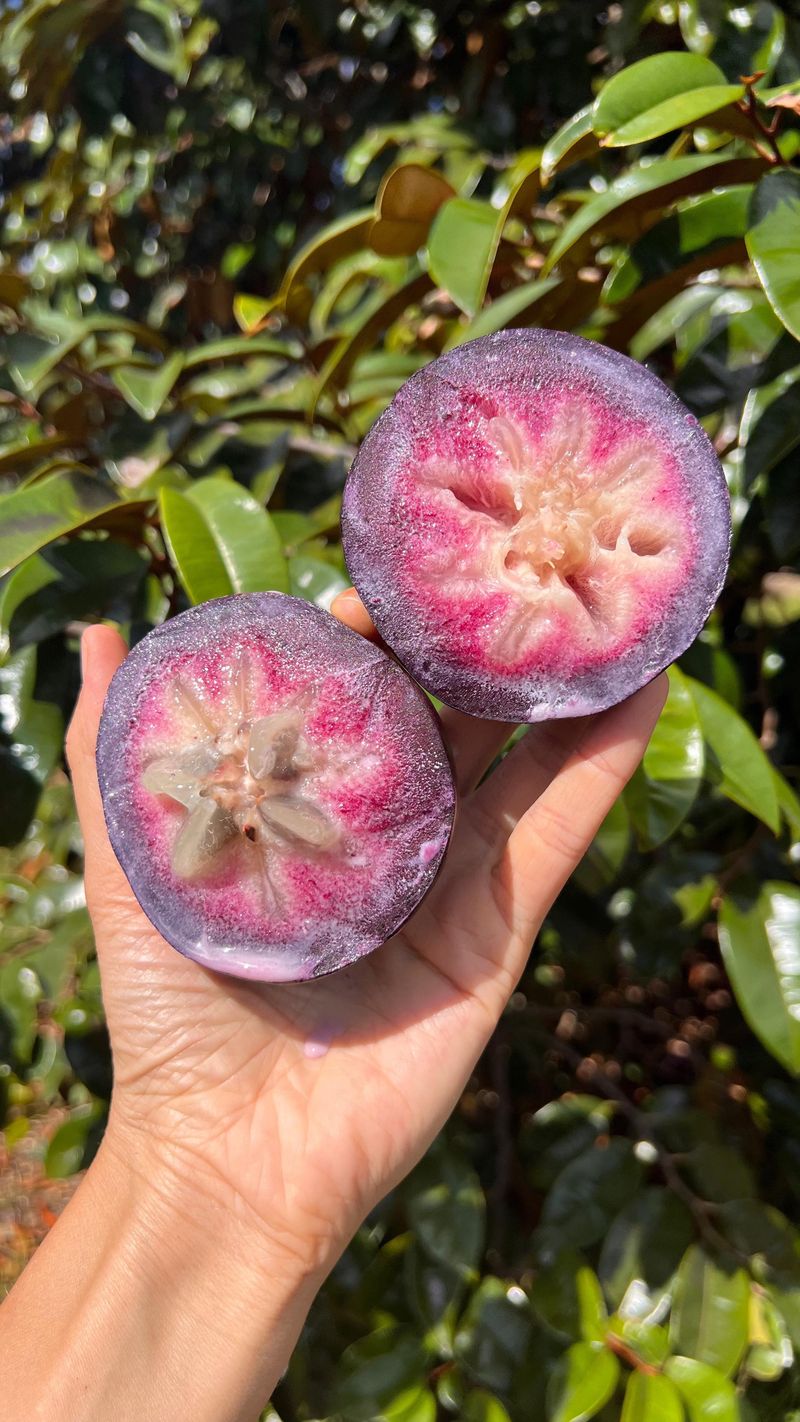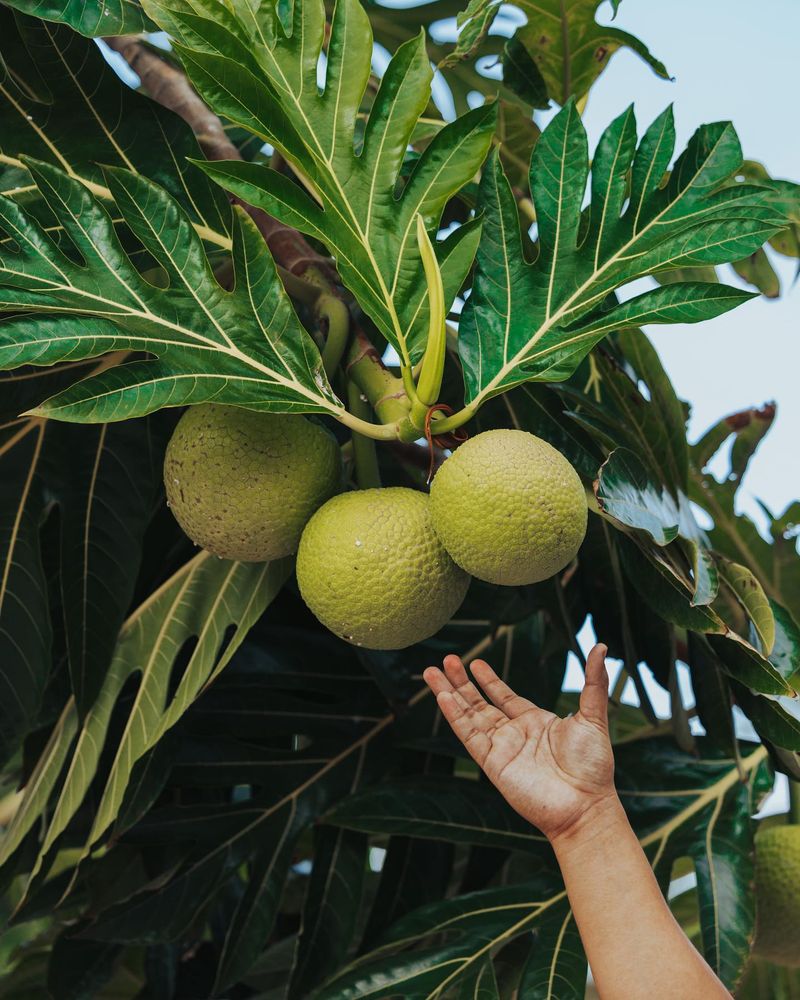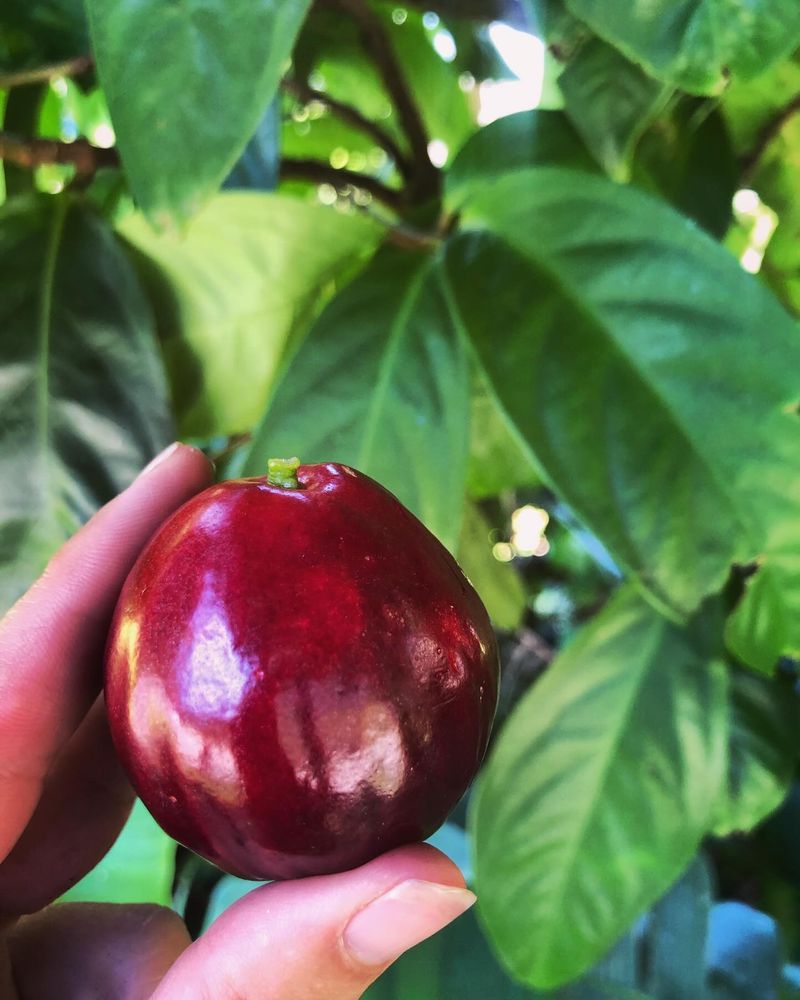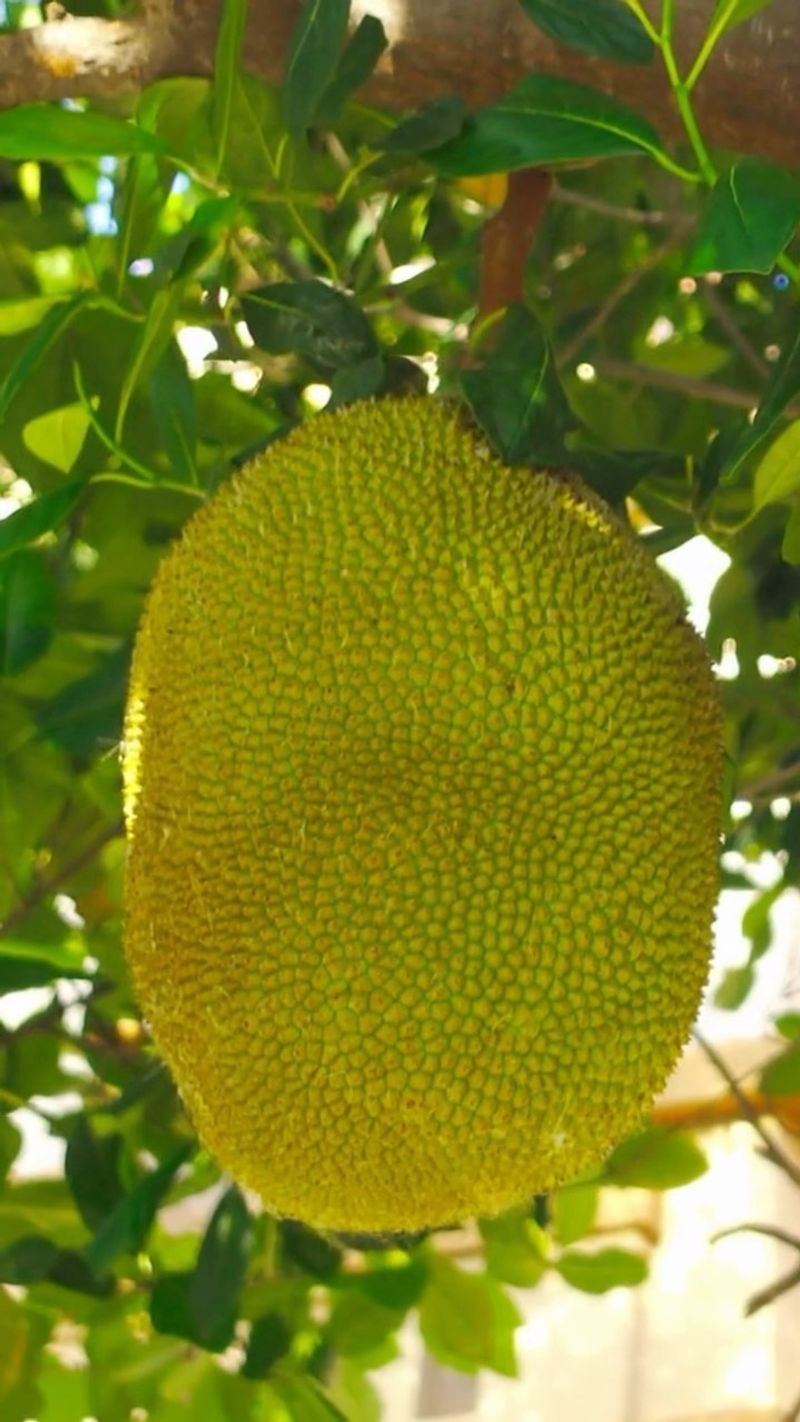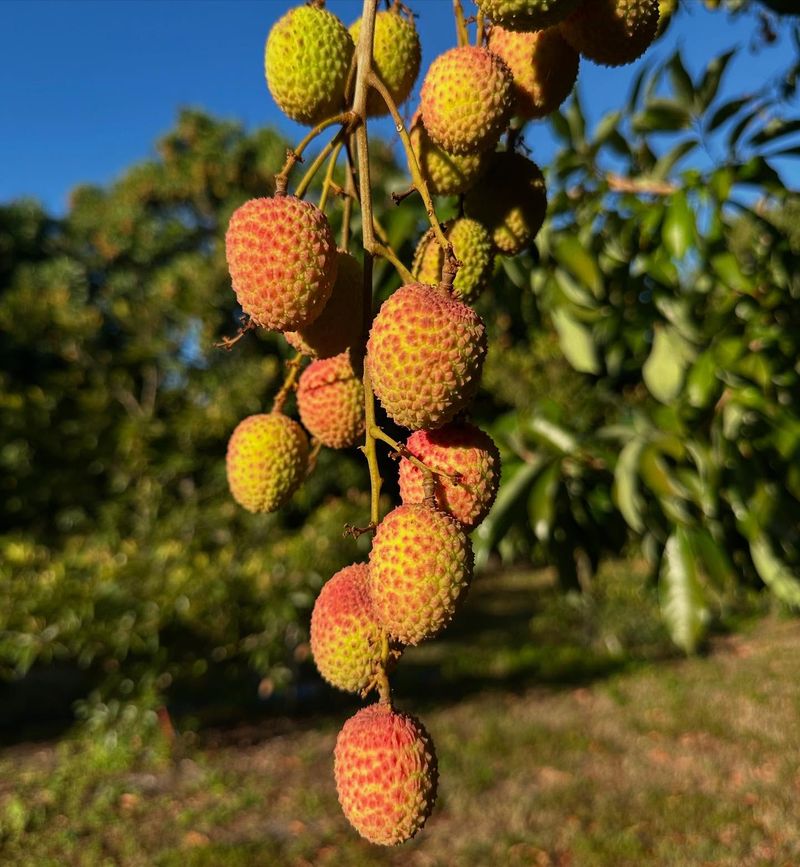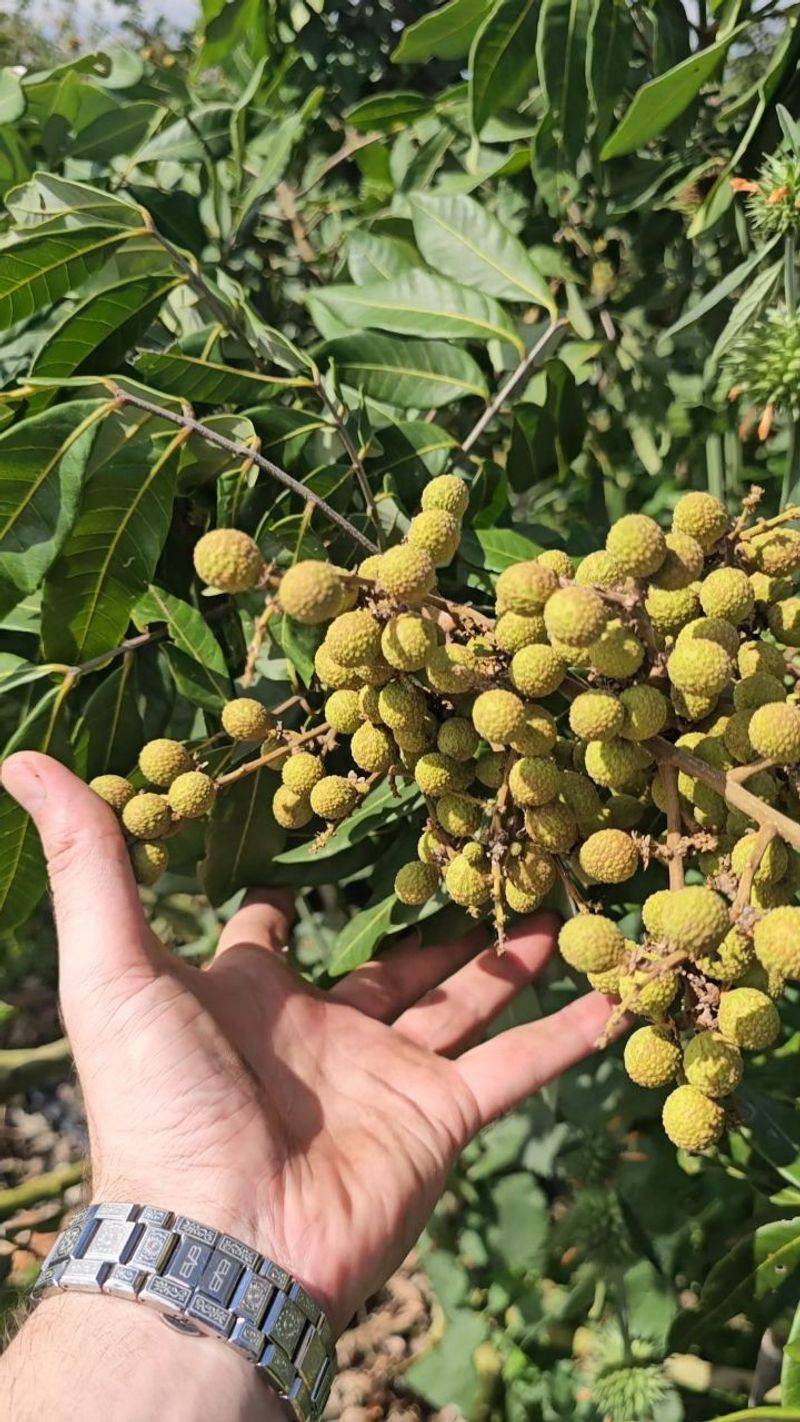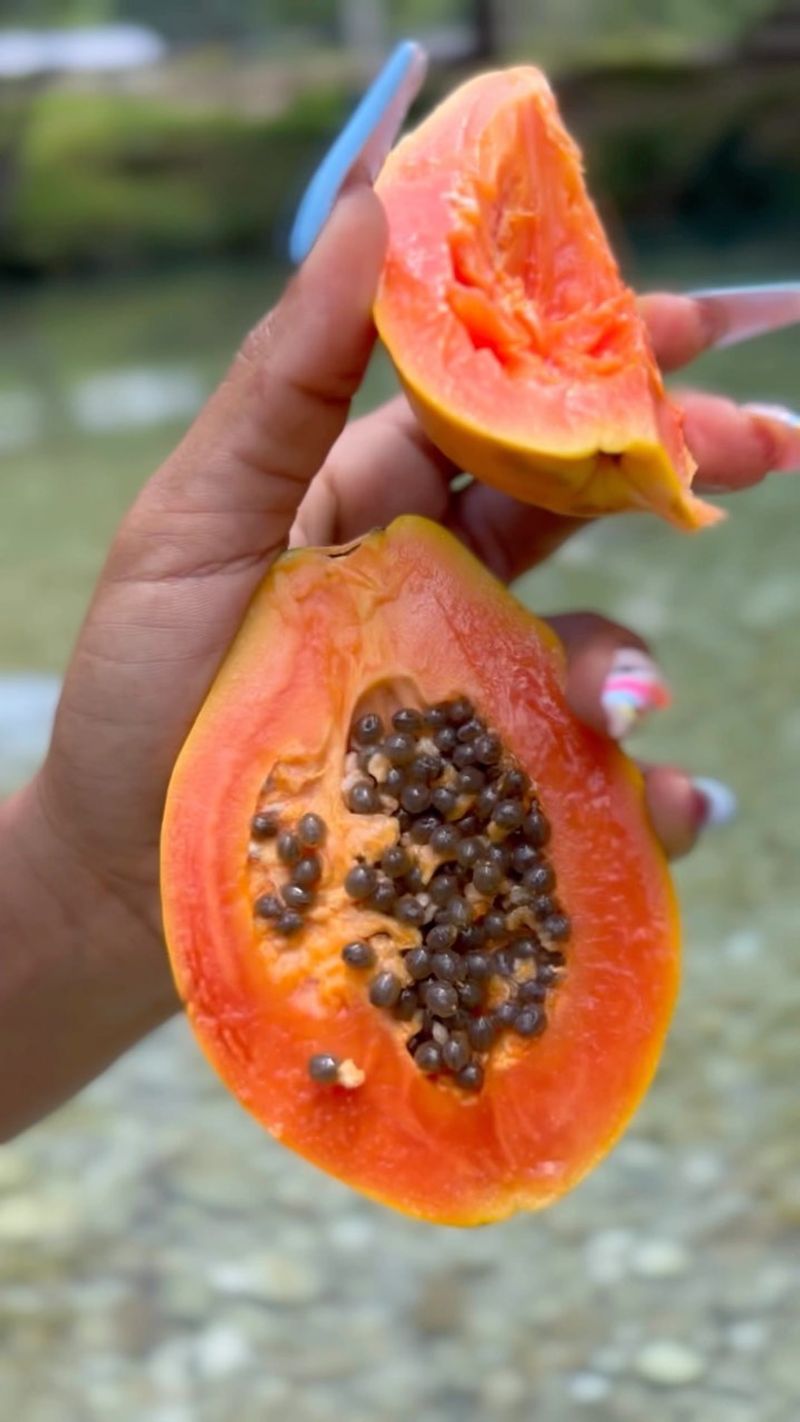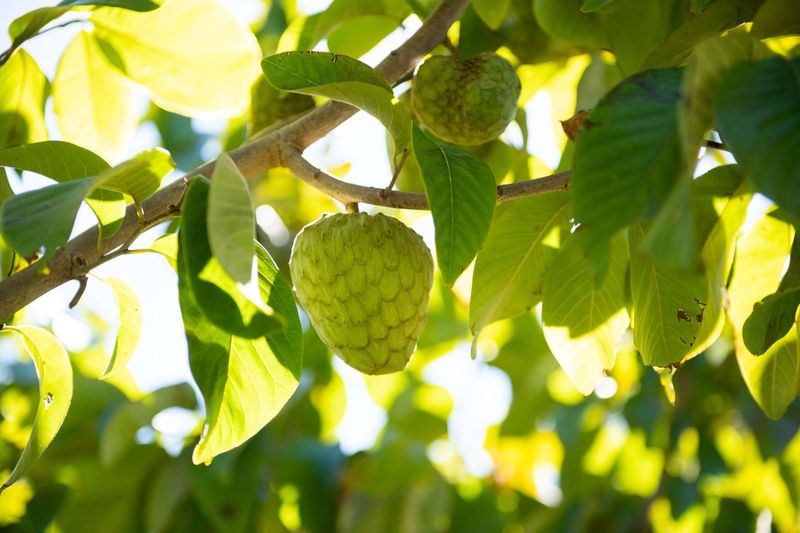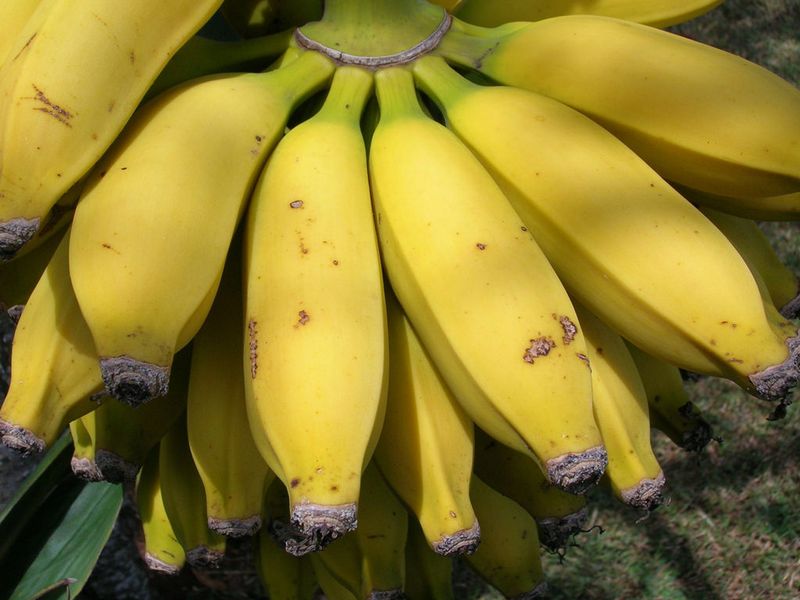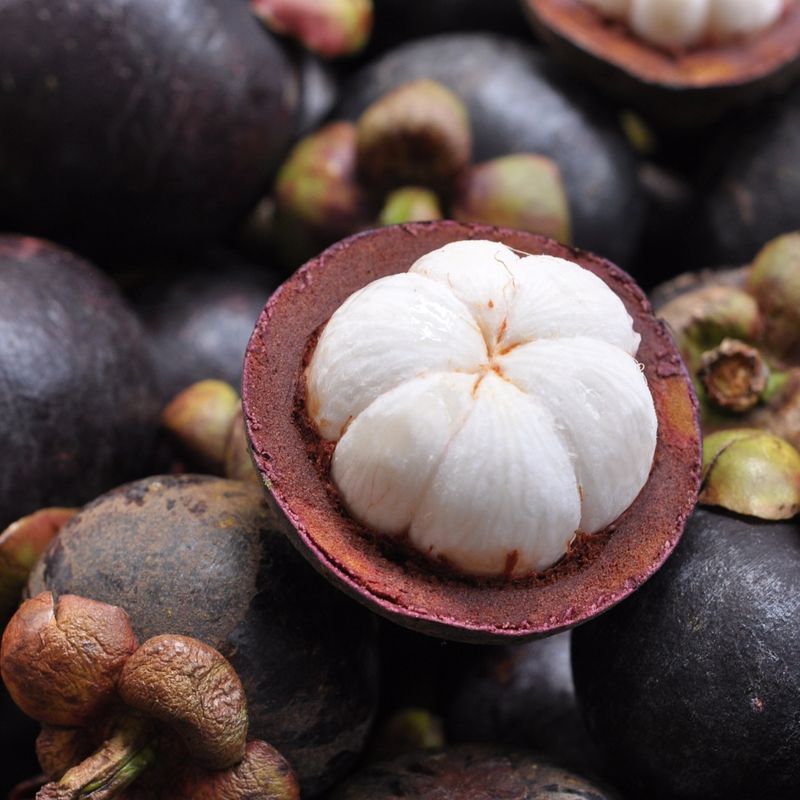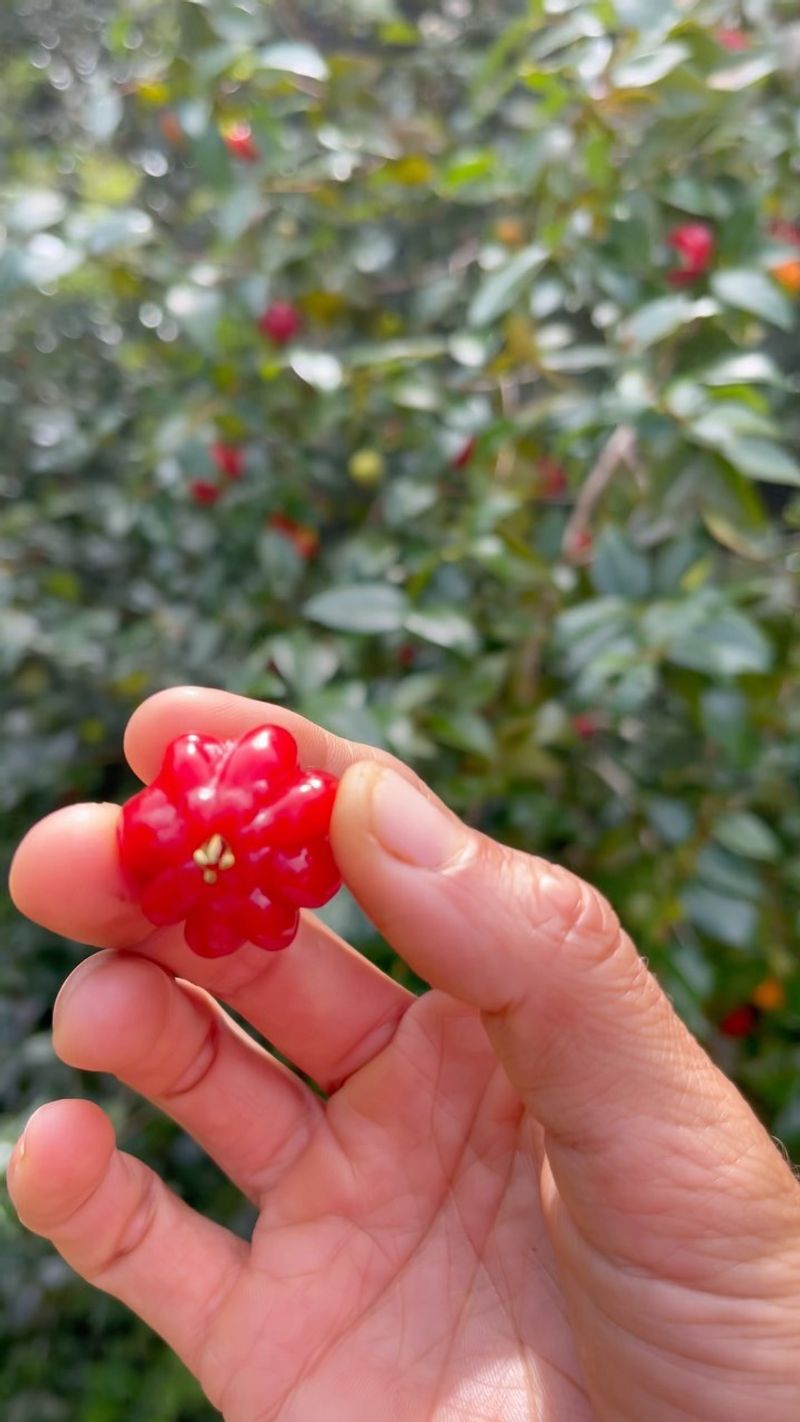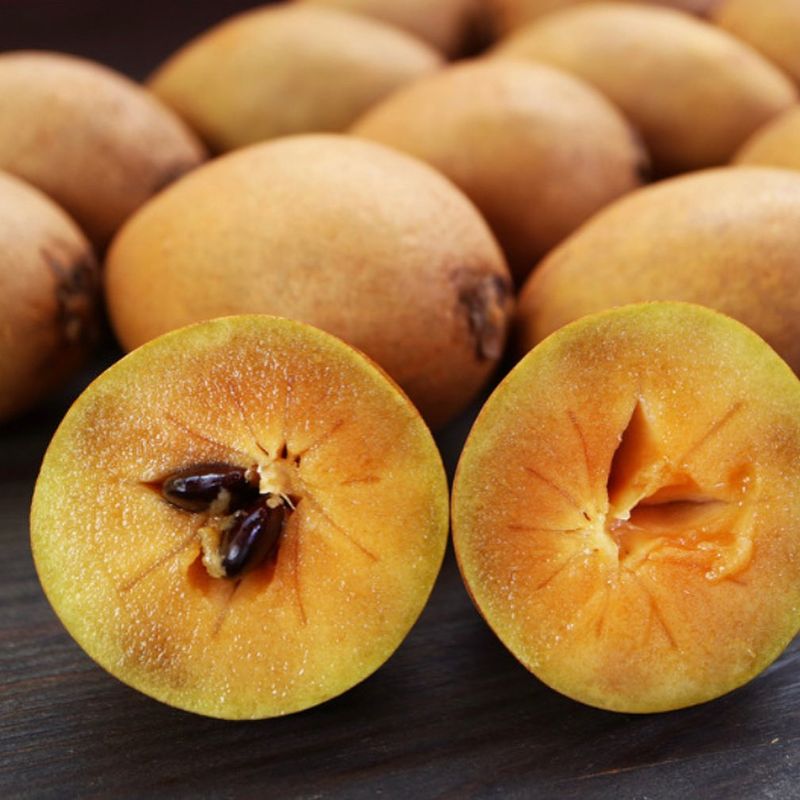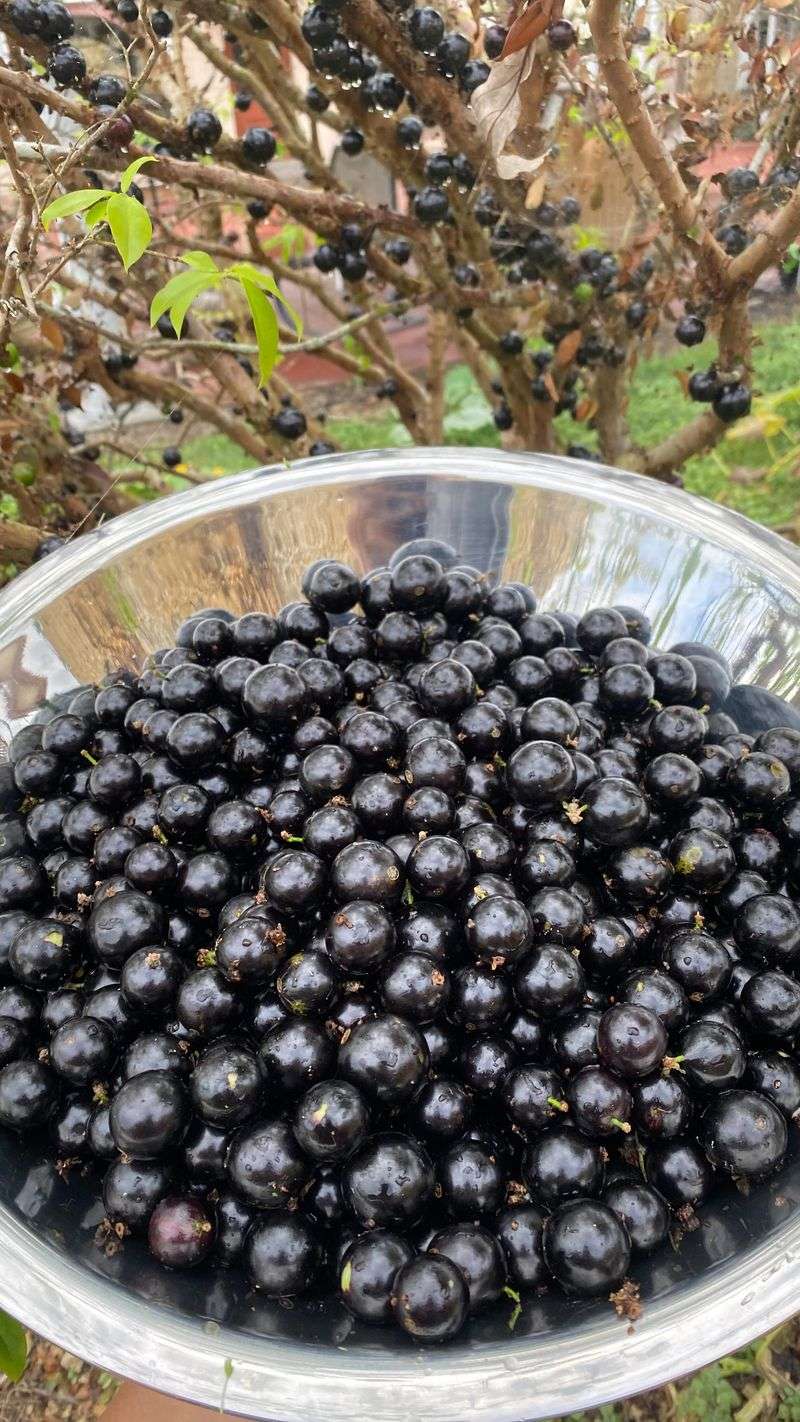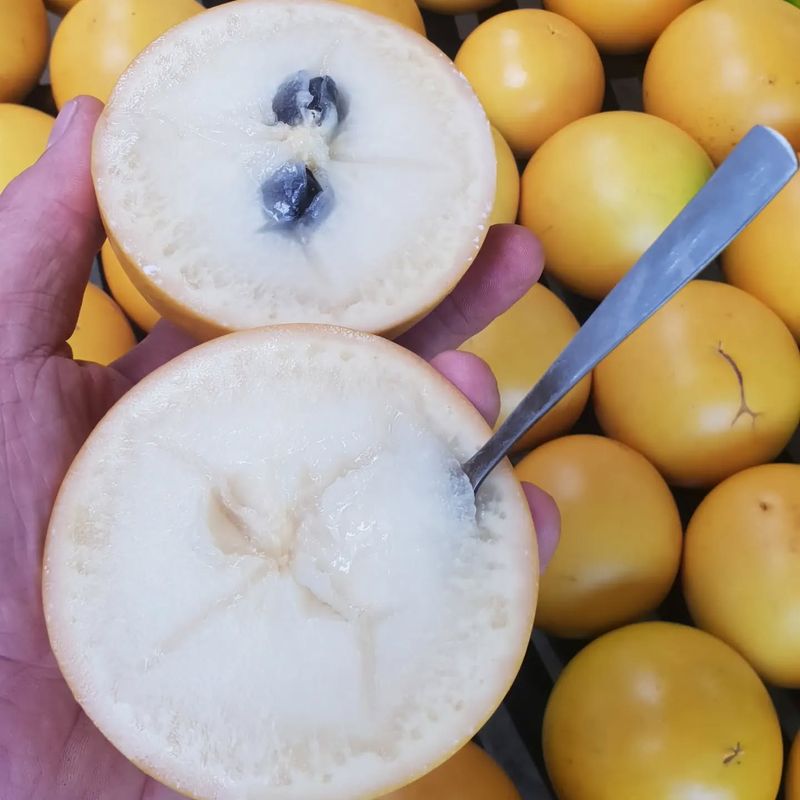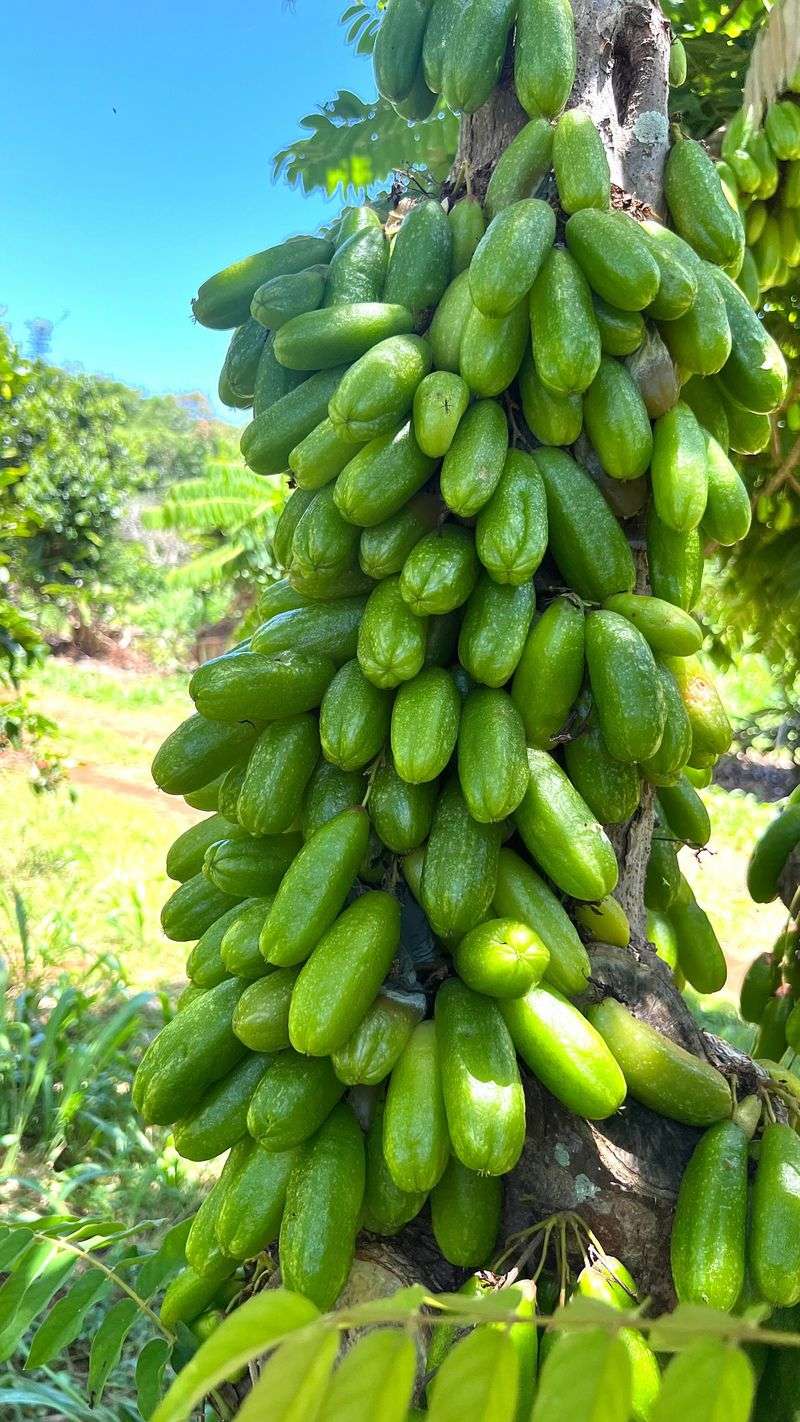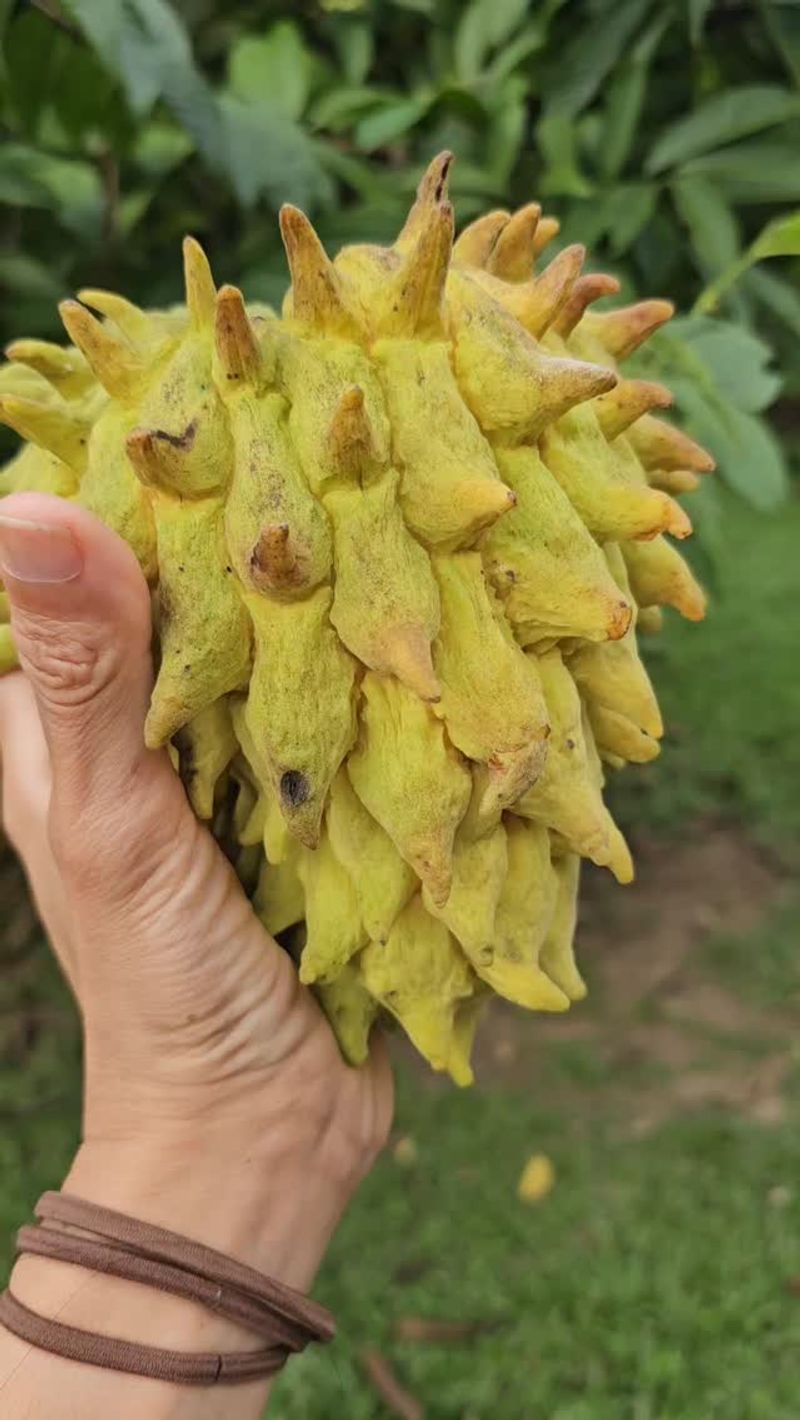Hawaii isn’t just about palm trees and beaches—it’s also a tropical jackpot for fruit lovers. Some of these exotic treats look like they’re straight out of a fairy tale, and yes, they taste even better.
From sweet to tangy and everything in between, each bite comes with a little burst of surprise. You might stumble across one at a local market or right in someone’s backyard.
Curious what’s out there? Here’s a juicy list to get you started.
1. Lilikoi (Passion Fruit)
Sweet-tart and incredibly aromatic, lilikoi grows wild throughout Hawaii’s lush landscapes. The wrinkled purple or yellow shells contain bright orange pulp filled with edible seeds that burst with tropical flavor.
Rich in vitamins A and C, lilikoi boosts immunity and promotes healthy skin. The fruit contains natural sedatives that can help improve sleep quality and reduce anxiety. Many locals enjoy it in refreshing drinks, desserts, and the famous lilikoi butter.
2. Rambutan
Looking like a sea urchin that grew on land, rambutan’s hairy red exterior hides a sweet, grape-like white flesh inside. Breaking through the soft spines reveals a juicy, translucent fruit that easily separates from its single seed.
Packed with iron and vitamin C, rambutans help fight fatigue and boost your immune system. They’re also loaded with copper, which supports healthy blood vessels and nerve cells. Locals often eat them fresh by the handful during summer months when they’re most abundant.
3. Pitaya (Dragon Fruit)
Otherworldly in appearance, pitaya features vibrant pink or yellow skin with green scales. Slice it open to reveal either white or magenta flesh dotted with tiny black seeds, resembling a starry night sky.
Low in calories but high in fiber, pitaya helps with digestion and keeps you feeling full longer. The fruit contains prebiotic properties that nourish good gut bacteria. Hawaiian varieties tend to be sweeter than those found elsewhere, making them perfect for smoothie bowls.
4. Soursop (Guanabana)
Resembling a spiky green heart, soursop hides creamy white flesh with a unique flavor profile combining strawberry, pineapple, and citrus notes. Despite its intimidating exterior, the fruit yields easily when ripe.
Loaded with antioxidants, soursop helps fight inflammation and oxidative stress. The fruit contains compounds being studied for potential cancer-fighting properties. Many Hawaiians blend it into refreshing drinks or enjoy it straight from the rind with a spoon when perfectly ripened.
5. Star Apple (Caimito)
Cut this purple or green fruit horizontally and you’ll discover why it’s called star apple – the seed core forms a perfect star pattern! Its smooth, sweet flesh has a jelly-like consistency that melts in your mouth.
Rich in calcium and phosphorus, star apple supports bone health and dental strength. The fruit contains natural compounds that help regulate blood sugar levels. Hawaiian locals often enjoy it chilled, scooping out the flesh with a spoon for a refreshing treat on hot island days.
6. Breadfruit (Ulu)
A staple in ancient Hawaiian diets, breadfruit grows to volleyball size with a bumpy green exterior. When cooked, its starchy flesh develops a texture and taste similar to freshly-baked bread – hence its fitting name.
Incredibly nutritious, breadfruit provides complex carbohydrates that release energy slowly throughout the day. High in fiber and protein, it’s more filling than many other fruits. Traditional Hawaiian cooking methods include roasting it whole in underground ovens or frying it into delicious chips.
7. Mountain Apple (Ohia Ai)
Not related to regular apples, these crimson bell-shaped fruits grow on tall trees throughout Hawaii’s mountain regions. Biting into one reveals crisp, juicy white flesh with a delicate rose-water flavor and refreshing texture.
Mountain apples deliver a healthy dose of vitamin C and powerful antioxidants that help neutralize free radicals. The fruit has been used in traditional Hawaiian medicine to soothe sore throats. During summer months, locals gather them fresh from the trees for an instant island refreshment.
8. Jackfruit
The world’s largest tree fruit, jackfruit can reach an impressive 100 pounds! Its spiky green exterior protects yellow fruit pods inside that taste like a cross between pineapple, banana, and mango when ripe.
Jackfruit provides substantial amounts of potassium for heart health and blood pressure regulation. Young, unripe jackfruit is popular as a meat substitute due to its pulled-pork-like texture. Hawaiian farmers have cultivated smaller varieties that are more manageable for home consumption.
9. Lychee
Encased in bumpy red armor, lychee reveals translucent white flesh with a floral sweetness and juicy grape-like texture. These addictive little fruits grow in bunches on trees throughout Hawaii’s northern regions.
Bursting with vitamin C, lychees provide more than 100% of your daily requirement in just a single serving. The fruit contains polyphenols that may improve blood circulation and heart health. Hawaiian varieties are prized for their exceptional sweetness and are often enjoyed fresh or frozen as a cooling summer treat.
10. Longan
Often called “dragon’s eye” because of the black seed visible through its translucent flesh, longan has a smooth tan shell. Sweeter but less aromatic than its cousin lychee, it offers a more subtle honey-like flavor.
Longan has been used in traditional medicine to improve memory and combat anxiety. Rich in iron, the fruit helps prevent anemia and fatigue. Hawaiian-grown longans tend to be especially juicy and sweet, making them a popular snack at farmers markets across the islands.
11. Strawberry Papaya
Smaller than regular papayas, strawberry papayas feature bright orange-red flesh with a sweeter, more intense flavor. Their name comes from their strawberry-like fragrance that fills the air when perfectly ripe.
Loaded with digestive enzymes, particularly papain, they help break down proteins and ease digestion. The fruit contains lycopene, a powerful antioxidant linked to reduced cancer risk. Hawaiian varieties are treasured for their consistent sweetness and are often enjoyed with a squeeze of lime for breakfast.
12. Cherimoya (Custard Apple)
Mark Twain called cherimoya “the most delicious fruit known to man.” Its green scaly exterior hides creamy white flesh with a custard-like texture and complex flavor blending pineapple, banana, and vanilla.
Rich in vitamin B6, cherimoyas support brain development and function. The fruit contains significant amounts of magnesium, which helps regulate muscle and nerve function. Hawaiian-grown varieties benefit from the volcanic soil, developing particularly rich flavor profiles that make them sought after by fruit enthusiasts.
13. Apple Banana
Smaller and stubbier than standard bananas, these island favorites pack an unexpected flavor punch. True to their name, they offer hints of apple alongside their banana sweetness, with a firmer texture than conventional varieties.
Providing resistant starch, apple bananas feed beneficial gut bacteria and improve digestive health. They maintain lower sugar content while delivering potassium, vitamin B6, and fiber. Hawaiian locals often use them in cooking, as they hold their shape better than regular bananas when heated.
14. Mangosteen
Called the “queen of fruits” for good reason, mangosteen’s purple exterior opens to reveal snow-white segments that melt in your mouth. The sweet-tart flavor is utterly unique – imagine strawberries, peaches, and vanilla ice cream blended together.
Packed with xanthones, powerful antioxidants found almost exclusively in mangosteen, this fruit supports immune function. The juicy segments contain anti-inflammatory compounds being studied for various health applications. Hawaiian-grown mangosteens are particularly prized for their perfect balance of sweetness and acidity.
15. Surinam Cherry
Looking like tiny pumpkins, these ribbed red fruits grow wild throughout Hawaii. Biting into one delivers an unexpected complex flavor – sweet, tart, and slightly resinous with aromatic undertones that linger pleasantly.
High in vitamin C and antioxidants, Surinam cherries help strengthen your immune system. The fruit contains good amounts of vitamin A for eye health and skin repair. Many Hawaiian residents have childhood memories of picking these bright treats straight from neighborhood bushes during afternoon adventures.
16. Sapodilla
Brown and unremarkable from the outside, sapodilla surprises with incredibly sweet flesh reminiscent of brown sugar and root beer. The soft, grainy texture melts away, leaving a pleasant lingering sweetness unlike any other fruit.
Contains tannins that help reduce inflammation in the digestive tract. Rich in saponins, compounds that may help lower cholesterol levels naturally. Hawaiian varieties grow especially sweet thanks to the mineral-rich volcanic soil, making them popular treats at farmers markets across the islands.
17. Jaboticaba
Bizarre and fascinating, jaboticaba fruits grow directly on the tree trunk, covering it with purple-black berries. Pop one in your mouth to experience a sweet-tart grape-like flavor with thicker skin and unique tropical notes.
Loaded with anthocyanins, powerful antioxidants that give the fruit its dark color and fight inflammation. Contains unique compounds being studied for potential anti-cancer properties. Hawaiian growers have introduced this Brazilian native to several islands, where it thrives in the similar tropical climate.
18. Abiu
Bright yellow and egg-shaped, abiu contains translucent flesh that tastes remarkably like caramel custard. The gelatinous texture surrounds dark seeds, with a skin that turns sticky when cut – a small price to pay for its unique flavor.
Rich in calcium and phosphorus, abiu contributes to stronger bones and teeth. The fruit contains natural compounds that may help regulate blood sugar levels. Hawaiian growers have successfully cultivated this Amazonian native, which thrives in the islands’ warm temperatures and consistent rainfall.
19. Bilimbi
Often mistaken for a small cucumber, bilimbi delivers a surprising sour punch that makes your mouth pucker instantly. The crisp, juicy flesh grows in clusters directly from the tree trunk and main branches.
Extremely high in vitamin C, bilimbi strengthens immunity and promotes collagen production. The fruit contains oxalic acid, which has been used traditionally to remove stains and clean metal. Hawaiian cooks often use it as a souring agent in dishes that would typically call for lemon or vinegar.
20. Rollinia
Resembling a green pine cone with soft spikes, rollinia reveals creamy white flesh with a complex flavor profile. Imagine lemon meringue pie mixed with banana custard and a hint of pineapple – all in one incredible fruit.
Contains significant amounts of thiamine and riboflavin for energy production and cell function. The fruit provides good levels of vitamin C to support immune health. Hawaiian climate provides ideal growing conditions for this delicate fruit that’s rarely found in conventional markets.

